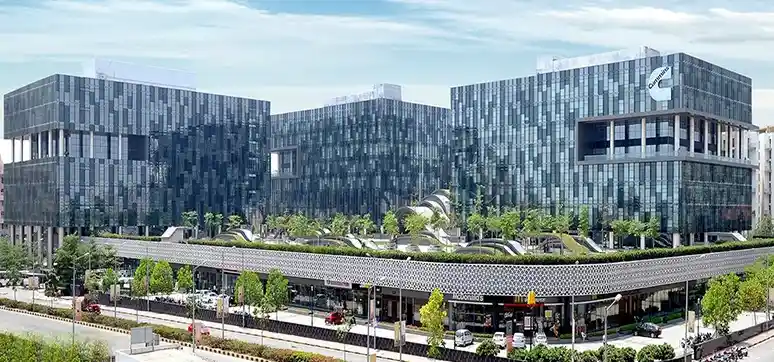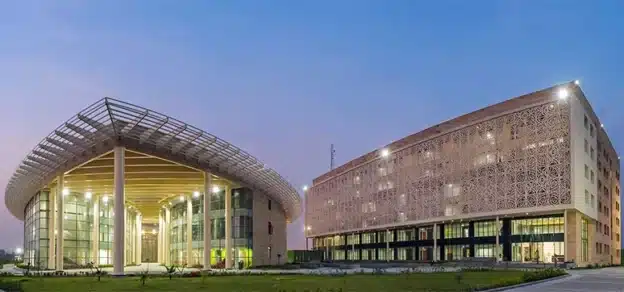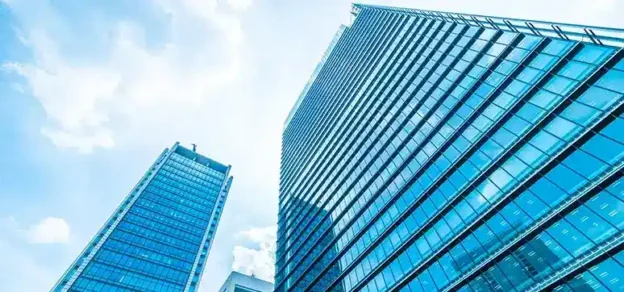The construction industry alone is responsible for 40% of the total energy consumption of the world and is projected to grow with the increase in population and housing demands. In this situation, it is necessary that the development and growth are sustainable and green in consideration of the environment around us. This is the very reason why concepts like sustainable building design, energy-efficient and green buildings, net zero building, and energy-positive development are the need of the hour. These concepts will help in reducing the building footprints on the ecological system.
Traces of fenestration in India can be found from the 3rd century where Indian architecture has given serious thought to fenestration in architectural designs. However, the usage of high-performance glazing in façade and fenestration is still at its nascent stage. At 2.1 KG per capita glass consumption, India is currently way below the global average of 5 kg, which indicates that this Industry is at its growth stage.
Major challenges in the fenestration Industry are the lack of required infrastructure, skilled resources & technologies, and the majority of the unorganised players which are the roadblocks to the fast-paced growth of the façade and fenestration industry.
EVOLUTION OF FAÇADES

As the construction industry evolves with need, our buildings also grow and adapt. The element of design which has seen the most modification after the form of the building is the façade. Façade design evolved from being a simple wall that supported the roof and floor to one of the most important factors in terms of identity, sustainability and structural viability of the building. Considering the building stock, the façades are very important, based on the scope of making a building green and sustainable, because of their volume and area. Research done in the past decades has now brought us to the present concept of living façades, green façades, kinetic façades, hybrid façades, sustainable façades, etc. to amplify the energy efficiency of buildings.
EVOLUTION OF GLASS AS A BUILDING FAÇADE MATERIAL
Glass has been the most popular and most talked about façade element in building design since its introduction. Early modernism was a revolutionary period for the building industry, as glass and steel were used extensively in construction.
Attributes like ease of installation, lesser construction time, optimum daylight in dense cities, sleek design, easy dismantling, and recyclability became the USP of glass as a sustainable building material. The two most breakthrough innovations in the history of glass are the introduction of laminated glass in the 1920s and coated glass products in the 1970s. While laminated glass brought the feature of safety and security, coated glass brought a revolution in making façade energy-efficient.
SUSTAINABILITY THROUGH EFFECTIVE FENESTRATION STRATEGY
The green building movement started with the concept of sustainable buildings and is widely adopted by all the countries in the world. The governments have promoted the movement by creating different green rating systems and standards to follow which ensure wise use of materials, systems and processes in the construction industry.

Ambitious milestones like India’s plan to become Net-zero by 2070, can be achieved only by green policies, awareness about different concepts associated with sustainability, and innovative and wise decisions. Apart from sustainability, the Government initiatives like Make in India, the launch of the Energy Conservation Building Code (ECBC 2017), National Building Code (NBC 2016), all of which promote the usage of the right building materials including glass. Regular revisions in these policies help the nations to introduce new concepts to the standards, helping to achieve the goals faster and easier.
IMPORTANCE OF MATERIALS – GLASS: A BOON OR BANE?
Being present in every building, the nature of glass is perceived to be a problem now, glass enveloped buildings are thought to be most uncomfortable, over-exposed and overheated using more active cooling methods, consuming more electricity and thus adding to climate change.
The list does not restrict itself to energy consumption, the reflective nature of glass is also responsible for the heat island effect, increasing the temperatures of the immediate environment. Despite such a prevalent notion, the use of glass is still a preferred choice in large projects, futuristic ambitious skyscrapers and city developments, like the mirror city, UAE.
GLASS: A SUSTAINABLE SOLUTION TO COUNTER THE CLIMATE CHANGE
With the increase in demand for building stock in the world to house the population, it became necessary that the considered development is aligned with the concept of sustainability. And with such extensive construction on the row in the future, the use of sustainable and green building materials is essential. Researchers and developers have evolved a material palette that consists of green and sustainable building materials.
One of the materials is glass. Over the period of time, clear glass has evolved into performance glass, where the glass products have different performance values suited for each requirement. But, the product alone is not sufficient to bring maximum energy efficiency in a building, its wise selection of the product, well placement, and optimum shading are major factors to achieve maximum efficiency of the glass, along with ensuring thermal and visual comfort of the occupants.

The present-day market is loaded with glass products that cater to all the energy efficiency needs of the buildings. In a tropical country like India, Solar control and Low E products reduce the heat transfer into the building and further lessen the consumption of energy to mitigate the heat from the building. Coated glass also referred to as performance glass has different coatings on float glass which gives the glass its properties to become high performance by controlling the daylight, solar radiation and thermal insulation.
Innovations like electrochromic glass are gaining popularity among designers and energy professionals. The feature of the glass to respond to the external climate and manage its tint to maintain the indoor ambient environment by using a unique control system is what makes it energy efficient. Another innovation coming across is glass blocks replacing masonry as the walling material.
Glass blocks are energy-efficient. in terms of both lighting and thermal comfort inside the building. Due to its translucent nature, the natural light entering the space is diffused, reducing the need for artificial lighting and avoiding visual discomfort due to glare simultaneously. The hollow centres in the glass block provide insulation to the heat ingress. The finishing of the glass blocks with mortar joining also helps to prevent air infiltration better than windows and glazing systems.
Sustainability not only pertains to the environment but also includes the safety and security of human lives and infrastructure. Impact and fire resistance glass with increased strength and integrity provides extra protection to the inhabitants from any mishappening.
FUTURE OF FAÇADES AND FENESTRATIONS
To know about the future of façades, it is important to understand the future of sustainability. The trend tells us about energy-positive development which includes surplus generation of energy on-site using renewable resources, enough for the building as well as giving back to the power grid.
Since façades have a maximum area under solar exposure, they can produce more electricity using photovoltaic panels if placed on them. Using the same concept, innovations are being made to integrate photovoltaic cells with the building’s glazing system.
Glass panels with BIPV can be used as spandrel glasses in the building, whereas no compromise to the view and daylight coming from the vision glass can be ensured Integration of glass with kinetic façades is also in the innovation stage. Optimisation of kinetic shadings to shade the façade as per the time of the day and direct solar radiations falling on it to get the best results in energy efficiency.

As it is quite clear that the future of the fenestration industry in India is very bright and the following are the driving factors fuelling the accelerated growth of the industry:
- Organised players
- Increase in awareness
- Government intervention
- Reduction in cost due to localisation
- Fast-paced growth in the construction industry
- Technological enhancement
FUTURE LOOKS BRIGHT
While the fenestration industry is ripe for future growth, there are many challenges that can hinder the pace and disrupt the future growth path. Lack of awareness at the end consumer level about the disadvantages of the traditional windows system, no proper windows rating system, lack of sufficient façade consultants and unavailability of façade and fenestration as a separate subject in major colleges are few of many such challenges which can become the roadblock.
Industry, influencers, policymakers and academia have to come together and address these issues in an organised way to clear the path for a seamless growth of the façade and fenestration industry. It will also help India in achieving its dream of achieving a net zero goal by 2070.














